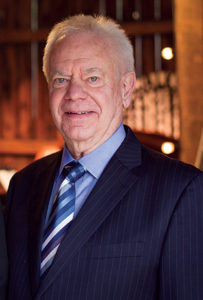 Midsummer’s Music has developed a solid reputation for giving concerts that create a very powerful impression among audience members. We have even taken to saying that these events are “Not just a concert, it’s an experience.” But I have puzzled over just what is at the heart of that special experience and especially how to describe it to potential new concertgoers. It seems that, as Artistic Director, I ought to be conversant with this dimension of our presentations. So, here goes:
Midsummer’s Music has developed a solid reputation for giving concerts that create a very powerful impression among audience members. We have even taken to saying that these events are “Not just a concert, it’s an experience.” But I have puzzled over just what is at the heart of that special experience and especially how to describe it to potential new concertgoers. It seems that, as Artistic Director, I ought to be conversant with this dimension of our presentations. So, here goes:
To distill it down to just one word, I would have to say it is “Communication.” That’s easy to say, but just what does it mean? Certainly, the intimacy that our concerts provide is an important element. If you want to have good communication when speaking with someone, being close enough to catch every nuance is key. Facial expressions, tone of voice, and body language are also involved. It works much the same way with music, and our venues provide just such an environment where you can even sometimes hear key breaths from the musicians indicating important phrasings. And the telltale looks between musicians are also indicative of a special rapport.
However, before we get to any of those details, the communicator has to have something to say, and if she does, she has to know how to express it. How many times have we heard someone drone on and on using a lot of words but without getting any real point across?
Sometimes, we as listeners of music tend to ignore this aspect. We just expect the musicians to play the notes well and make nice sounds that we will enjoy. We forget that those really good performances that send us home moved or somehow changed are created by some kind of musical alchemy. It isn’t enough for those virtuoso musicians to play flawlessly and with great mastery. They have to have something to tell us and a way to do it. They have to bring us under their spell like wonderful actors and woo us with their characterization.
We assume great competency when we go to a concert of professional musicians. Good musicians spend an enormous amount of time in the practice room honing that skill. The technical part can be all-consuming. But even college level students who get the technical part of playing the instrument often can’t get beyond the challenge of the notes. Total absorption with perfection gets in the way of their saying something we all want to hear and find convincing.
Some time ago I had a former graduate student come back to see me because he had an audition for the Seattle Symphony coming up. He wanted to play his audition material for me to get some possible pointers. Almost all orchestral auditions start out with an excerpt from a concerto. In this case, it was Mozart’s Bassoon Concerto—a very standard work studied by every bassoonist. Mike began his presentation, and after just a few phrases, I stopped him and said, “Mike, what were you thinking about when you played that—what were you concentrating on?” He said, “I know that to get past the preliminary round, I have to play perfectly, so I was thinking about playing the right notes, good rhythm, the proper dynamics, etc.” I said, “Mike, that’s just what it sounded like!” But then I added, “But that’s all it sounded like.” I said I heard technical acuity but no music.” Then, I gave him a suggestion. “This time, I want you to pretend you are the soloist standing in front of a symphony orchestra playing this piece. The orchestra plays the lengthy introduction, and it’s almost time for you to come in with the heroic sounding first theme. In your mind, this music represents a famous general returning to court after a huge victory—perhaps Wellington after defeating Napoleon. You puff out your chest and make your grand imperial entrance with your Mozart theme.” Mike started again. He was a changed bassoonist. His Mozart was entirely different—captivating, riveting, energetic, full of elegant swagger…. The technique was flawless, but that wasn’t what I was tuned into. I was hearing the heroic return of a victorious general.
A few months later, I got a call from Mike. He won the audition in Seattle. He had transcended the technique by telling a story. He had something important to say, and the conductor and audition committee had listened and gotten the message, something the other bassoonist hadn’t been able to do as well as he.
For many years, my wife Jean was a Professor of Flute at Roosevelt University’s College of Performing Arts in addition to her duties as Principal Flute at Lyric Opera of Chicago. In her role at Roosevelt, she not only taught the most qualified flute students but also taught a performance class for all the woodwind students. In this class that met once a week, students who had prepared a solo piece in their lessons and were ready to perform it presented it to the other students under the very discerning ear of Jean, a consummate performer. She would often come home and complain to me about how boring their performances were—heads stuck in the music just playing notes on the page. She couldn’t stand that and came up with one particularly ingenious technique to combat it. After playing the piece, Jean would walk up to them on stage with a bowl in hand, which contained a number of small slips of paper each inscribed with a short message. One might say, “You just broke up with your girlfriend/boyfriend.” Another might say, “A puppy dog exploring the neighborhood.” They ran the gamut of emotions, each one being unique and clever. The student would draw one out of the bowl and read it to the class. Then it was his job to play the movement of his piece in a way that suggested the saying on the piece of paper. It was the luck of the draw. Sometimes the saying seemed to have a vague reference to the piece. Most often, it was pretty far off, but the student was supposed to do his best, even if it meant making a sad piece sound like an exploring puppy dog. The more outrageous the comparison was, the more fun they had with it, and the less pressure they felt in finding a different way of approaching their piece. The whole class enjoyed this exercise, and they started finding ways of really expressing the music instead of just the notes. They were thinking, and playing, outside the box that had them so hamstrung.
Many advanced players go to some effort to develop their sense of messaging. Konstantin Stanislavsky’s books such as An Actor Prepares where he emphasizes “living” a role rather than “performing” it and Viola Spolin’s Improvisation for the Theater, which advocates exercises or games “to unlock the individual’s capacity for creative self-expression,” are a couple of favorites. By the way, Spolin was the mother of Door County’s acting guru, Paul Sills who was the founder of Chicago’s Second City. Jean’s “Exploring Puppy” exercise was her attempt to give her students a taste of the Spolin/Sills technique.
So, when you next attend a Midsummer’s Music performance, listen to those messages coming your way. I’m sure you’ll be dazzled by the technical brilliance (and it is thrilling), but the thing that will especially touch you, that thing you may take home with you and savor, is the performers’ ability to turn those notes on the page into little thoughts, tidbits of sentiment, or even suggestions of a story line that can pierce your defenses and open you up to new possibilities. I won’t call our musicians “therapists” – not quite – but they are very adept at making a strong impression that in some cases, we have been told, can be life-changing. This is the communication that makes Midsummer’s Music a rare experience and “not just a concert.”
Opening Night is Thursday, June 13, at The Kress Pavilion in Egg Harbor and is the first of 38 concerts through Labor Day. Check out our special offer on Flex-Pack tickets that will save you over 25% on six tickets for the summer and fall. Come be touched by the experts. I plan to be there getting my treatment. Hope to see you soon. Visit www.midsummersmusic.com or call (920) 854-7088 for tickets or more information.
Jim Berkenstock, Artistic Director
